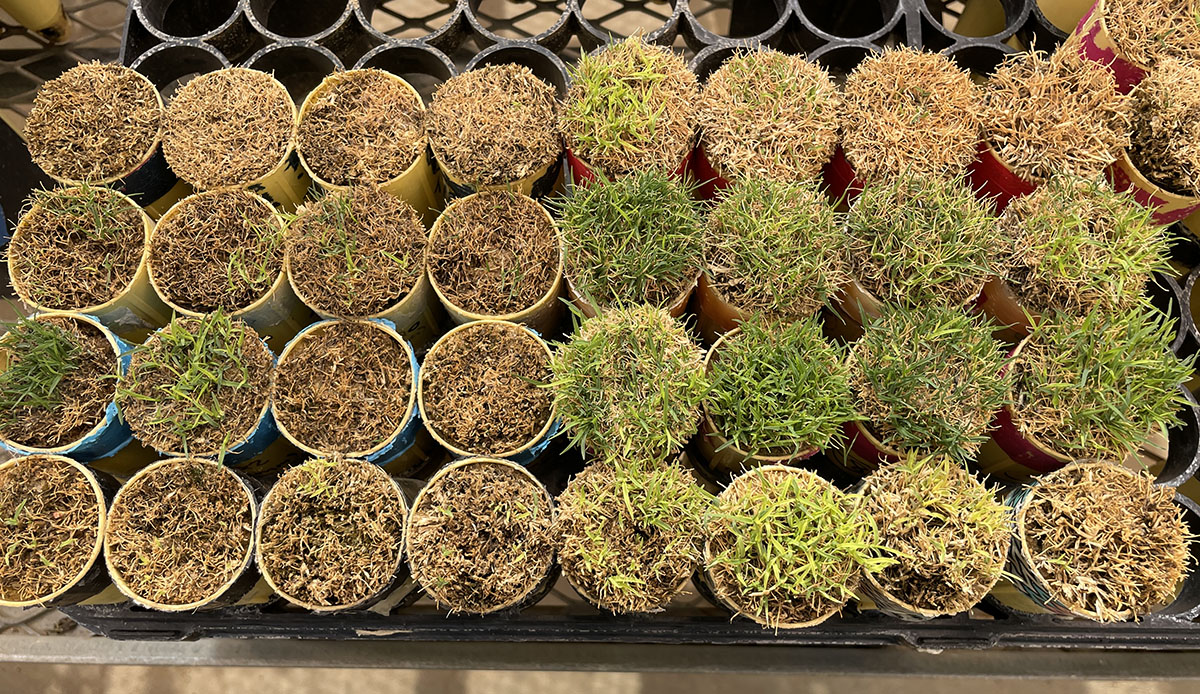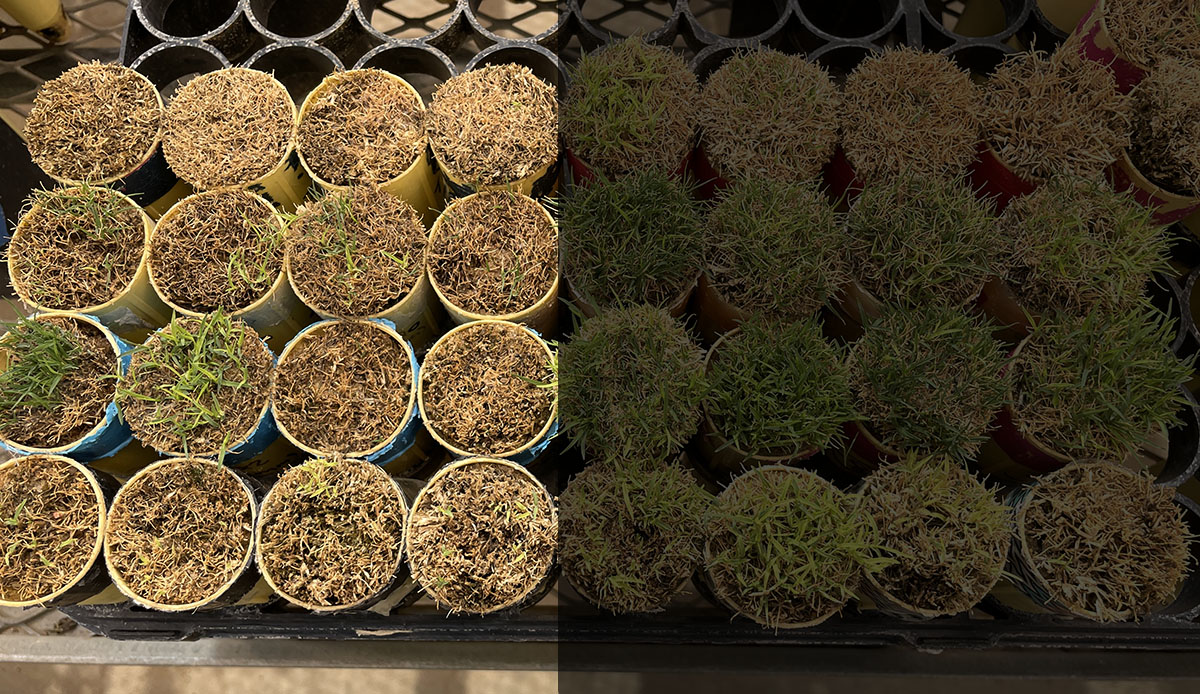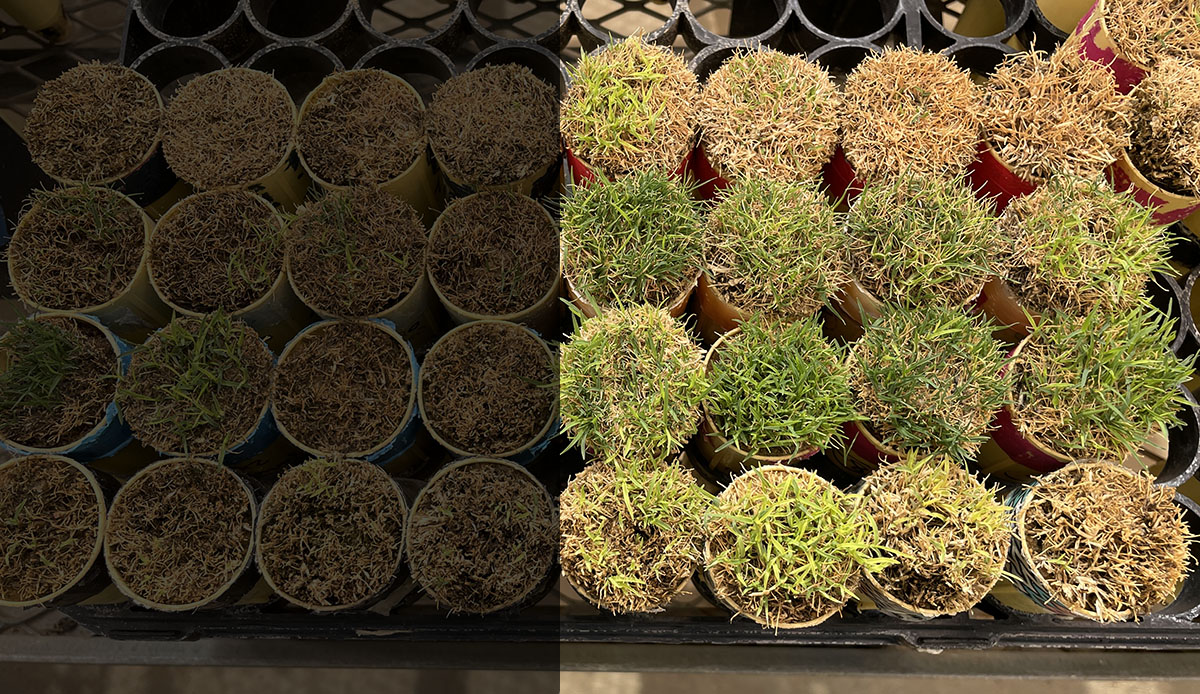Improving freeze tolerance in putting green-type bermudagrasses through mowing height adjustments
Introduction
Bermudagrass has become a popular turfgrass species used on golf course putting greens in the transitional climatic zone of the United States, playing an important role in shaping the quality, playability and aesthetic appeal of golf courses. One of the challenges that bermudagrass managers face is its winter survivability. In response to this challenge, researchers are actively engaged in developing bermudagrass varieties with increased winter hardiness. As part of these efforts, Oklahoma State University has released a new winter hardy putting green type bermudagrass OKC3920. Concurrently, practical strategies to enhance winter management for putting green-type of bermudagrass are under exploration. This study assessed the freeze tolerance of four bermudagrasses and explored the impact of mowing height adjustments on enhancing the resilience of putting green-type bermudagrasses.
Methods
The experiment was conducted at the Controlled Environment Research Laboratory at OSU, in Stillwater, Oklahoma. Freeze tolerance in selected bermudagrass varieties, including two elite experimental genotypes (11X2 and OKC0805), a recently released cold-hardy cultivar (OKC3920) and a commercially available standard (TifEagle) were assessed. Mowing heights were maintained with bench settings of 1/8” vs. 1/4” to determine their impacts on freeze tolerance. During the growing season, trimming was done daily or every other day, while in the cold acclimation period, it was reduced to weekly. The freeze tests involved subjecting the grasses to a gradual linear decline at 1.8 F per hour in soil temperature, ranging from 24.8 F to 12.2 F. Subsequently, the grasses were moved to a greenhouse, which was set to a day/night temperature of 86 F/77 F, and their recovery were monitored for five weeks. The study was repeated for validation.
Key Findings: Improved Freeze Tolerance on Newer Cold-Hardy Cultivar
OKC3920 demonstrated superior freeze tolerance compared to TifEagle, as demonstrated by their LT50 (lethal temperature that kills 50% of the population) values presented in Tables 1 and 2.
| Cultivar or genotype | 1/8" |
LT50 (F) | 1/4" |
||
|---|---|---|---|---|---|
| TifEagle | 18.9 | a | 17.4 | a | |
| 11X2 | 18.9. | a | 16.7 | ab | |
| OKC0805 | 17.1 | a | 13.8 | c | |
| OKC3920 | 15.6 | b | 14.9 | bc |
Table 1. Average (Mean) lethal temperatures that resulted in 50% survival (LT50) of bermudagrass genotypes in the first experiment when exposed to soil temperatures ranging from 24.8 to 12.2 F at two mowing heights. Mean followed by the same letters are not statistically significantly different at the 95% certainty level.
| Cultivar or genotype | 1/8" |
LT50 (F) | 1/4" |
||
|---|---|---|---|---|---|
| TifEagle | 19.2 | a | 16.0 | c | |
| 11X2 | 16.7 | bc | 14.0 | d | |
| OKC0805 | 16.7 | bc | 14.9 | cd | |
| OKC3920 | 16.0 | c | 13.1 | d |
Table 2. Average (Mean) lethal temperatures that resulted in 50% survival (LT50) of bermudagrass genotypes in the second experiment when exposed to soil temperatures ranging from 24.8 to 12.2 F at two mowing heights. Mean followed by the same letters are not statistically significantly different at the 95% certainty level.
Reducing Winter Damage
- Bermudagrasses maintained at higher mowing heights exhibited reduced winter damage and increased freeze tolerance (Figure 1; Richardson and Booth; 2023).
- The increased mowing heights create a larger surface area for carbohydrate accumulation, and the increased biomass could provide a protective buffer against traffic stress during freeze temperatures.
Figure 1. Recovery from freeze injury in bermudagrass was observed seven days after exposure to 17.6 F soil temperature.
Figure 1a. Top row on the left is TifEagle 1/8”. Second row is OKC3920 1/8” on the left. Third row is 11X2 1/8”. Bottom row is OKC0805 1/8” on the left.
Figure 1b. Top row on the right is TifEagle 1/4”. Second row on the right is OKC3920 1/4”. Third row on the right is 11X2 1/4”. Bottom row on the right is OKC0805 1/4”.
Practical Applications for Golf Course Management
- Strategic mowing height adjustments offer an effective approach to alleviate the adverse effects of freezing temperatures on bermudagrass putting greens. Turf managers could consider raising mowing height by 25% heading into the fall, ensuring this adjustment occurs when the grass is still vigorously growing to fully capture the benefits. As the season transitions into winter and the grass enters dormancy, raising the mowing height by an additional 25% is recommended by Richardson and Booth (2023).
- Adoption of cold-hardy grass varieties like OKC3920 could potentially reduce the need for winter covers, leading to cost savings and extended playable days on golf courses.
- The work represents exposure to lethal temperatures in a freeze chamber with recovery in greenhouse conditions. As such performance under field conditions would be expected to be similar but not necessarily identical to the performance seen in this work.
Conclusion
In conclusion, our research highlights the potential for improving winter survivability in bermudagrass putting greens. One approach involves utilizing cold hardy cultivar OKC3920, which demonstrated superior freeze tolerance compared to TifEagle. Although the OKC3920 cultivar is not currently available commercially, it is being offered for those interested in licensed production. In addition, raising mowing height could be considered a practical strategy to improve freeze tolerance in putting green-type bermudagrass. Golf course managers can apply this knowledge to make informed decisions, selecting resilient grass genotypes and optimizing mowing heights for improved winter survivability.



